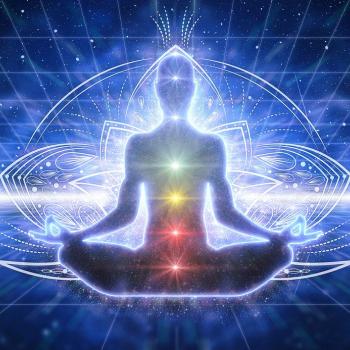As stress causes your body to tighten, the hips become crucial to nurturing and relieving emotional tension.
In the holistic well-being community, teachers will often talk about "storing emotions in our hips". Hence, many yogis use hip-opening exercises to regulate emotion. This article explores what it means to “store emotion” in the hips and how to release it for better mental and emotional well-being.
What does it mean to 'store emotion' in your hips?
Experts often discuss the mental effects of trauma or even high-stress levels but rarely the physical implications. Even if someone has worked to overcome the traumatic event, they may still be holding onto these stressful experiences in parts of the body. Our body holds onto stress in many ways, causing pain, tightness, and an increased heart rate.
Holistic practitioners may comment on the flow of energy around the body, contributing to optimal wellness. When we suppress emotions or ignore their existence, it’s common to experience an “energy block.” Many believe the hips hold our tension because it’s located near the sacral chakra - a key energy center associated with emotions and connection.
Alongside this, more than 20 muscles pass through the hip region, closely connected to your stress response. Consequently, when your hips are tight, sore, and neglected, it affects the entire body. Certain exercises and ‘hip-opening’ stretches target specific muscles within this area, improving circulation, energy, motion and even reducing back pain. Therefore, as stress causes your body to tighten, the hips become crucial to nurturing and relieving emotional tension.
How to get the most from your hip stretches?
Many people combine yoga and hip-opening stretches with a gentle meditation practice. The meditative state may enhance the emotional benefits of these postures by building self-awareness. As you experiment with these hip-opening stretches, try to approach them with self-compassion. This movement can bring emotion and thoughts to the surface you weren’t expecting. Confronting this will likely be difficult for some people, and we encourage you to stay present with each sensation and emotion that comes up.
Using a journal to write your thoughts can also help process these moments. If you need to, take a break and do some comforting self-care to distract yourself. Some people enjoy pairing this physical movement with natural supplements like CBD. Cannabis oral chew is a discreet option that is easy to take on the go or slip into your morning routine without any hassle. Research shows that CBD may help reduce feelings of anxiety and pain and improve overall well-being, giving you an extra dose of calm and comfort.
Lastly, although the tips mentioned in this article can be a nurturing form of self-care, talking with a professional is the best way to process and overcome trauma or stress. A certified therapist can teach you how to cope with stress and reduce it in your daily life.
Hip openers to release emotion
You can do many hip exercises, with yoga and Qi-gong providing two nurturing ways to practice. It’s vital to go at your own pace and not to force your muscles into positions that cause pain, particularly if you’re new to hip openers or have a condition that limits mobility.
Four exercises to open the hips and lengthen your muscles:
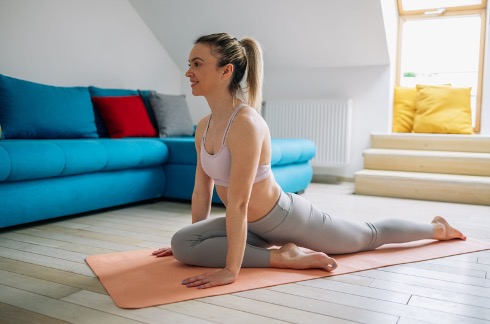 1. Pigeon pose
1. Pigeon pose
A popular yoga pose offering a deep stretch across the thighs, back, groin, piriformis, and psoas. The easiest way to get into the Pigeon Pose is by starting in a Downward Dog position or on your hands and knees.
You may place padding or a folded blanket under your hip to make this pose more comfortable. You can slowly enter a forward bend when you get into the pose. Focus on your breathing and the different sensations that arise - emotional, mental, or physical.
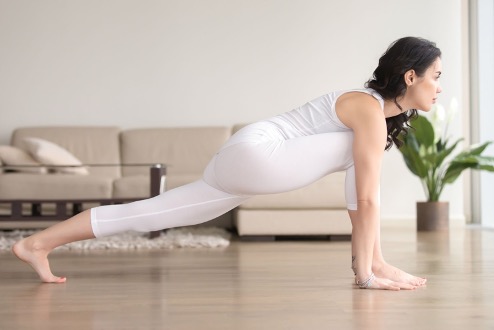 2. Lizard Pose
2. Lizard Pose
The lizard pose, also known as the gecko pose, focuses on the hips, groin, and inner hamstrings. This pose provides an intense stretch, but we recommend trying a variation if you’re still building up your flexibility. If you enjoyed the lizard pose, a similar hip-opening pose to try is a low lunge. Once again, Downward-Facing Dog provides a suitable place to start. When you’re ready, step one foot up to the outside of your hand. Ensure your knee is at a 90-degree angle and positioned above the ankle. Hold this pose for a few slow deep breaths before repeating it on the other side.
Hold this pose for a few slow deep breaths
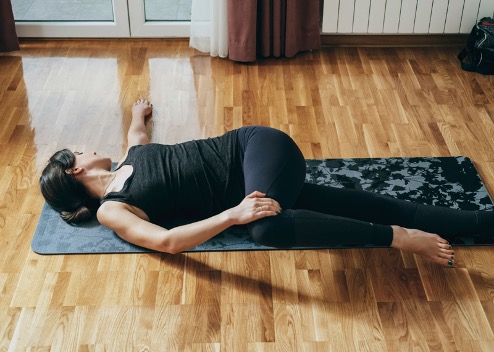 3. Reclining twist
3. Reclining twist
This next pose (also referred to as the Supine Spinal Twist) is ideal for releasing stress as it targets the glutes, chest, and obliques. This pose doesn’t focus on the hips as much as the others but provides a ‘heart opening’ position.
rinse the body
Many use this pose alongside hip openers to “rinse” the body and allow emotions to flow. To deepen this stretch and make it work for you, ensure you’re not holding your breath. Instead, breathe deeply and accept where your body is in this position, whether your knee makes it to the floor or not.
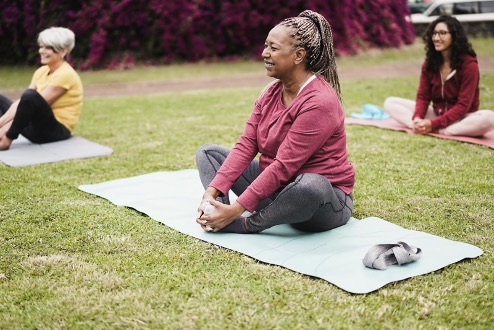 4. Seated butterfly
4. Seated butterfly
This last stretch offers a final cleansing movement for your hips. Start in a seat with your spine straight and your shoulders relaxed. By bringing the soles of the feet together, opening up your legs, and letting gravity pull your knees down, your hips receive a deep, slow stretch. The Butterfly Stretch will target the inner thighs, hips, lower back, and groin. Do not force your legs down; instead, let them open gently as you focus on deep breathing.
Closing thoughts
Hip-opening stretches provide a deeply nurturing way to care for the body, improve mobility, and boost energy. Hip openers may also release suppressed emotion and clear energy blocks.
consider incorporating meditation
You will need to try various exercises to find the ones that work best for you and build them into your routine. To take your hip-opening exercises to the next level, consider incorporating meditation practice, writing your thoughts during your stretches, or taking natural supplements like CBD.


